Caravan Reef is an infrequently-dived, simply enormous granite reef that lies very close to the slipway at Miller’s Point. Its northern reaches are close to the SAS Pietermaritzburg, but as can be seen from the map on its wikivoyage page the reef extends far south and has five distinct regions.

The one we dived (and the only one I’ve visited so far) is Caravan South, which is visible on the right of the map. The top of the reef is shallow, 4-5 metres, and after descending onto the pinnacle we dropped off the southern side. The southern side of the pinnacle, which runs almost west to east, is characterised by a vertical wall that drops down to about 20 metres on the sand. I love vertical reef structures – much easier to take pictures of something next to you rather than below you, but it does require some co-ordination and consideration among the divers to avoid getting in each other’s way.

Goot and I (after a false start) swam east along the wall at about 15 metres depth, with the current, which was (to put it mildly) howling. At the corner of the reef is a mass of jumbled boulders with small overhangs. Some of these rocks have quite sharp edges, like ancient tree roots or massive parmesan shavings, so there is a lot of surface area for life to grow on relative to the volume of the rock.

As we rounded the corner we encountered even more current – it was running roughly north to south, and coming around the reef, hence our difficulty with it whichever way we turned! Large numbers of compass sea jellies were being blown along by the current. We also saw an enormous root-mouthed sea jelly, with a small compass jelly caught in its tentacles (by accident – these creatures eat plankton). The false plum anemones living on the side of the reef were enjoying an unexpected bounty of jellyfish as some of the compass sea jellies had gotten caught on the side of the reef and were being devoured by opportunistic anemones.

The eastern edge of the reef has several cracks in it, mostly quite small, but we did see a few large roman taking advantage of the shelter. A small school of hottentot was surfing current on the eastern edge too, enjoying the snacks that it brought directly into their path. We swam into the current a short distance, became distracted by the root-mouthed jelly, and followed it back along the reef for a while. We then ascended to about 10 metres and drifted back down the reef with the current to the corner. By that stage we were getting low on air, so it was time to ascend to the top of the pinnacle. The surface current washed us off the pinnacle in short order, so we inflated an SMB and waited for the boat!

My favourite feature of the southern part of the reef is the vertical wall to the south, which extends along the eastern side as well to some degree. I’d like to explore the northern and western areas of this part of Caravan Reef, but the current prevented us from making much progress into those areas. Peter Southwood is busy mapping this reef, so contours should be added to the existing map on Wikitravel. I think that the current on the day we dived the reef had a lot to do with the extremely strong northwesterly wind that had been blowing for a day or two and dropped slightly on the day of our dive, but I’m not complaining – the visibility was stellar, almost top to bottom!

Dive date: 23 October 2011
Air temperature: 24 degrees
Water temperature: 12 degrees
Maximum depth: 18.0 metres
Visibility: 15 metres
Dive duration: 33 minutes








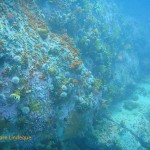


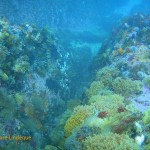





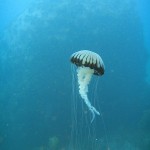















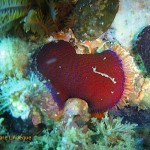
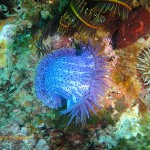






























One thought on “Dive sites: Caravan Reef”
Comments are closed.